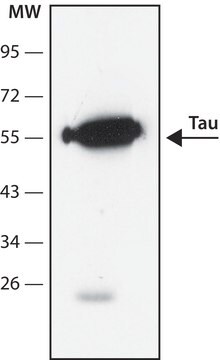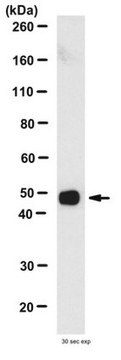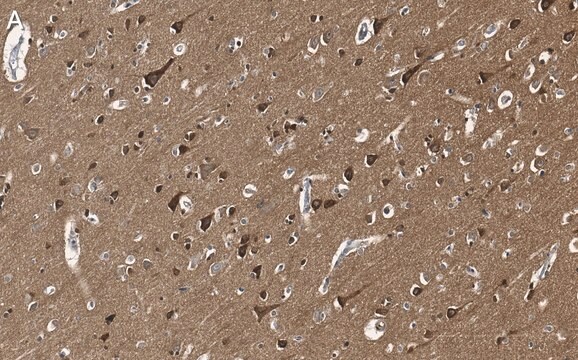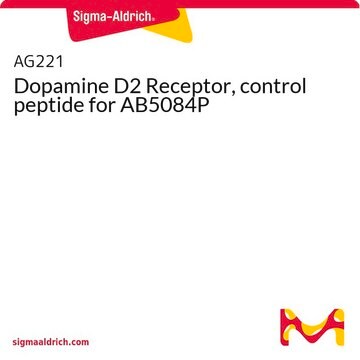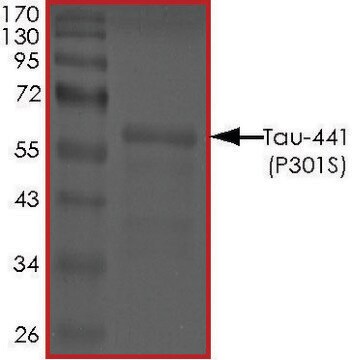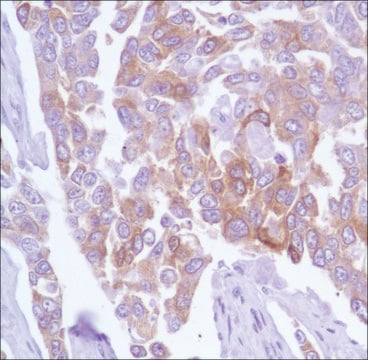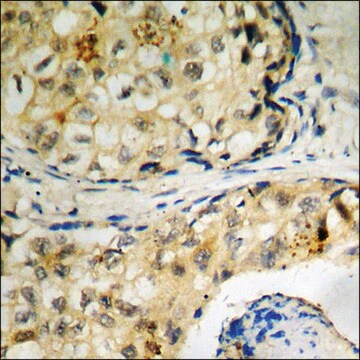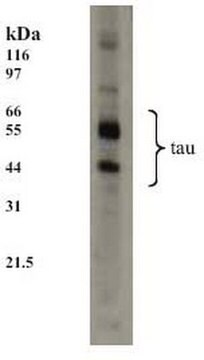ABN2178
ANTI-TAU (MAPT) Antibody
rabbit polyclonal
Sinônimo(s):
Microtubule-associated protein tau, Neurofibrillary tangle protein, Paired helical filament-tau, PHF-tau
About This Item
Produtos recomendados
Nome do produto
Anti-Tau (TauC4 Antibody, 354-369), serum, from rabbit
fonte biológica
rabbit
forma do anticorpo
serum
tipo de produto de anticorpo
primary antibodies
clone
polyclonal
reatividade de espécies
human
reatividade da espécie (prevista por homologia)
mouse (based on 100% sequence homology), rat (based on 100% sequence homology)
embalagem
antibody small pack of 25 μL
técnica(s)
electron microscopy: suitable
western blot: suitable
Isotipo
IgG
nº de adesão NCBI
nº de adesão UniProt
modificação pós-traducional do alvo
unmodified
Informações sobre genes
human ... MAPT(4137)
mouse ... Mapt(17762)
rat ... Mapt(29477)
Categorias relacionadas
Descrição geral
Especificidade
Imunogênio
Aplicação
Neuroscience
Electron Microscopy Analysis: A representative lot detected Tau (TauC4, 354-369) in Immunogold negative-stain Electron Microscopy applications (Fitzpatrick, A.W.P., et. al. (2017) Nature. 547(7662):185-190).
Qualidade
Western Blotting Analysis: A 1:2,000 dilution of this antibody detected TauC4 region in full length recombinant human tau (human 4R1N).
Descrição-alvo
forma física
Armazenamento e estabilidade
Outras notas
Exoneração de responsabilidade
Não está encontrando o produto certo?
Experimente o nosso Ferramenta de seleção de produtos.
Certificados de análise (COA)
Busque Certificados de análise (COA) digitando o Número do Lote do produto. Os números de lote e remessa podem ser encontrados no rótulo de um produto após a palavra “Lot” ou “Batch”.
Já possui este produto?
Encontre a documentação dos produtos que você adquiriu recentemente na biblioteca de documentos.
Nossa equipe de cientistas tem experiência em todas as áreas de pesquisa, incluindo Life Sciences, ciência de materiais, síntese química, cromatografia, química analítica e muitas outras.
Entre em contato com a assistência técnica
